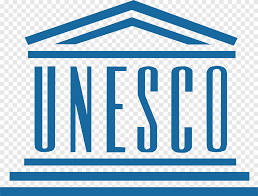UNESCO is the United Nations Organization for Education, Science and Culture.
World Heritage Site is the official name of the areas registered in the world heritage list they are actually protected sites and protected by the same Organization as described in the UNESCO World Heritage Convention, established in 1972. Iran joined UNESCO on September 6, 1948 and accepted the convention on February 26, 1975, making its historic sites eligible for inclusion on the list. Currently Iran has 24 sites registered in the list, among which 22 are of cultural matter and the remaining 2 of a naturalistic nature. Furthermore, Iran enjoys a series of intangible heritage recognized by UNESCO including the ancient Persian game called Choghan or Polo.
Iran
The country is located between the Caspian Sea and the Persian Gulf, on a plateau surrounded by three mountain ranges, at an average of over 1,200m above sea level. With two large deserts in the central basin, over 80% of Iran’s 1,648,000-square-kilometer area is arid or semi-arid land. Less than 10% of the land is arable and 6.8% is covered by forests.
List of UNESCO World Heritage Sites in Iran

Cultural Heritage of Iran
- Persepolis (1979)
- Chogha Zanbil Zigurat (1979)
- Meidan Emam or Naghshe Jahan square,Isfahan (1979)
- Takhte Soleyman or Throne of Solomon (2003)
- Bam and its Cultural Landscape (2004)
- Pasargada (2004)
- Soltaniyeh (2005)
- Bisotun (2006)
- Armenian Monastic Ensembles of Iran (2008)
- Shushtar Historical Hydraulic System (2009)
- Sheikh Safi al-din Khānegāh and Shrine Ensemble in Ardabil (2010)
- Tabriz Historic Bazaar Complex (2010)
- The Persian Garden or Pardis (2011)
- Masjed-e Jame of Isfahan (2012)
- Gonbade Qabus (2012)
- Golestan Palace (2013)
- Shahr-e Sokhte or burnt city (2014)
- Cultural Landscape of Meymand (2015)
- Susa (2015)
- The Persian Qanat or Kariz (2016)
- Historic City of Yazd (2017)
- Sassanid Archaeological Landscape of Fars Region (2018)
- Cultural Landscape of Hawraman/Uramanat (2021)
- Trans-Iranian Railway (2021)
- The Persian Caravanserai(2023)




Natural Heritage of Iran
- Lut Desert (2016)
- Hyrcanian Forests (2019)




Intangible cultural heritage of Iran
- Radif of Iranian Music (2009)
- Ritual dramatic art of Ta‘zīye (2010)
- Music of the Bakhshis of Khorasan (2010)
- Pahlevani and Zoorkhanei Rituals (2010)
- Traditional skills of carpet weaving in Fars (2010)
- Traditional skills of carpet weaving in Kashan (2010)
- Traditional skills of building and sailing Iranian Lenj boats in the Persian Gulf (2011)
- Naqqali,Iranian dramatic story-telling (2011)
- Qalishuyan rituals of Mashhad-e Ardehal in Kashan or carpet washing (2012)
- Nowrouz, the Iranian New Year (2016)
- Flatbread making and sharing culture: Lavash, Katyrma, Jupka, Yufka (2016)
- Choghan or Polo: a horse-riding game accompanied by music and storytelling (2017)
- Art of crafting and playing with Kamanche, a bowed string musical instrument (2017)
- Traditional skills of crafting and playing Dotar (2019)
- Art of miniature(2020)
- Pilgrimage to the St. Thaddeus Apostle Monastery(2020)
- The traditional art of calligraphy in Iran(2021)
- Crafting and playing the Oud(2022)
- Sericulture and traditional production of silk for weaving (2022)
- Turkmen-style needlework art(2022)
- Yaldā/Chella(2022)
Of course, much more is in the waiting section of the UNESCO list or in the documentation process in ICHHTO. Sooner or later they will be introduced into the world.
To learn about each of these elements in detail, you could find them on the UNESCO website!

